EB5AN States of Washington & Oregon Regional Center
Geographic coverage: All 39 counties in the State of Washington
View the official regional center designation letter for the EB5AN Washington Regional Center.
Contact us now to learn more about becoming a business affiliate.

Benefits of Affiliation with our State of Washington EB-5 Regional Center
Immediate Ability to Raise EB-5 Capital in Washington
Business affiliates of EB5AN, including our Washington EB-5 regional center, can immediately begin raising EB-5 investment funds in any of the designated geographic areas that comprise our USCIS-approved regional centers.
Indirect Job Creation Calculations
Business affiliates of our regional centers can calculate job creation through both direct and indirect job methodologies. This leads to higher job creation figures than direct non-regional center calculations of actual payroll employees.
Regional Center Affiliation Process
The regional center affiliation process can be a fast solution and a great fit for those looking to begin a project immediately. The benefits of affiliating with a regional center make this an excellent choice for many project developers.
Our experienced team will work with you to understand whether EB-5 funding is a good fit for your project and whether you qualify to affiliate with our regional centers.
Let Us Help You to Create Your Own Washington EB-5 Regional Center
Our Team Will Complete Your I-924 Application for a Washington EB-5 Regional Center in Three Weeks
EB5AN has obtained full state regional center coverage in multiple states and has completed more than 100 USCIS-compliant business plans and economic impact studies. The I-924 application process is complicated and requires legal expertise, economic analysis, business plan creation, and an understanding of how USCIS adjudicates applications.
EB5AN has the internal resources to assemble all required aspects of an I-924 application. Additionally, we have extensive experience with I-924 applications and understand all the key components and common pitfalls.
There are various approaches to take when filing an I-924 form; please contact us to learn more about the process and how we can work together to get your regional center approved quickly by USCIS.
Targeted Employment Area (TEA) Qualification Report in Washington for EB-5 Washington Regional Center Projects
Please visit our EB-5 TEA Map to determine whether your Washington EB-5 regional center project’s location qualifies as a rural or high unemployment targeted employment area (TEA).
Free Targeted Employment Area Map for all 50 States
Click image to view the TEA map and instantly download a free TEA qualification report.

![]()
Because TEA designation is crucial to the success of many EB-5 projects, it is important to understand how USCIS reviews TEA designation requests. Once you determine whether your Washington EB-5 regional center project is located in a TEA, you can prepare a TEA report yourself. The free downloadable report available through the EB5AN TEA map is also suitable for submission to USCIS.
If you still need assistance with preparing your EB-5 TEA report for your EB-5 regional center project in Washington, please contact the EB5AN team directly by phone at 1-800-288-9138 or via e-mail at info@eb5an.com, or simply order an EB-5 TEA Qualification Report.
About the State of Washington and the Economic Climate of our EB-5 Washington Regional Center
The EB5AN Washington EB-5 regional center was created to provide an investment vehicle for qualified foreign investors seeking to obtain permanent resident status in the United States through an investment in a USCIS-approved EB-5 regional center with geographic coverage of all 39 counties in the State of Washington.
Historically, several elected Washington public officials, including senators and congressional representatives, have endorsed the EB-5 regional center program as a great opportunity for the U.S. economy and for foreign investors who want to immigrate to the United States and invest in a USCIS-approved Washington EB-5 regional center such as the EB5AN Washington Regional Center.
Washington: Population and Income Demographics
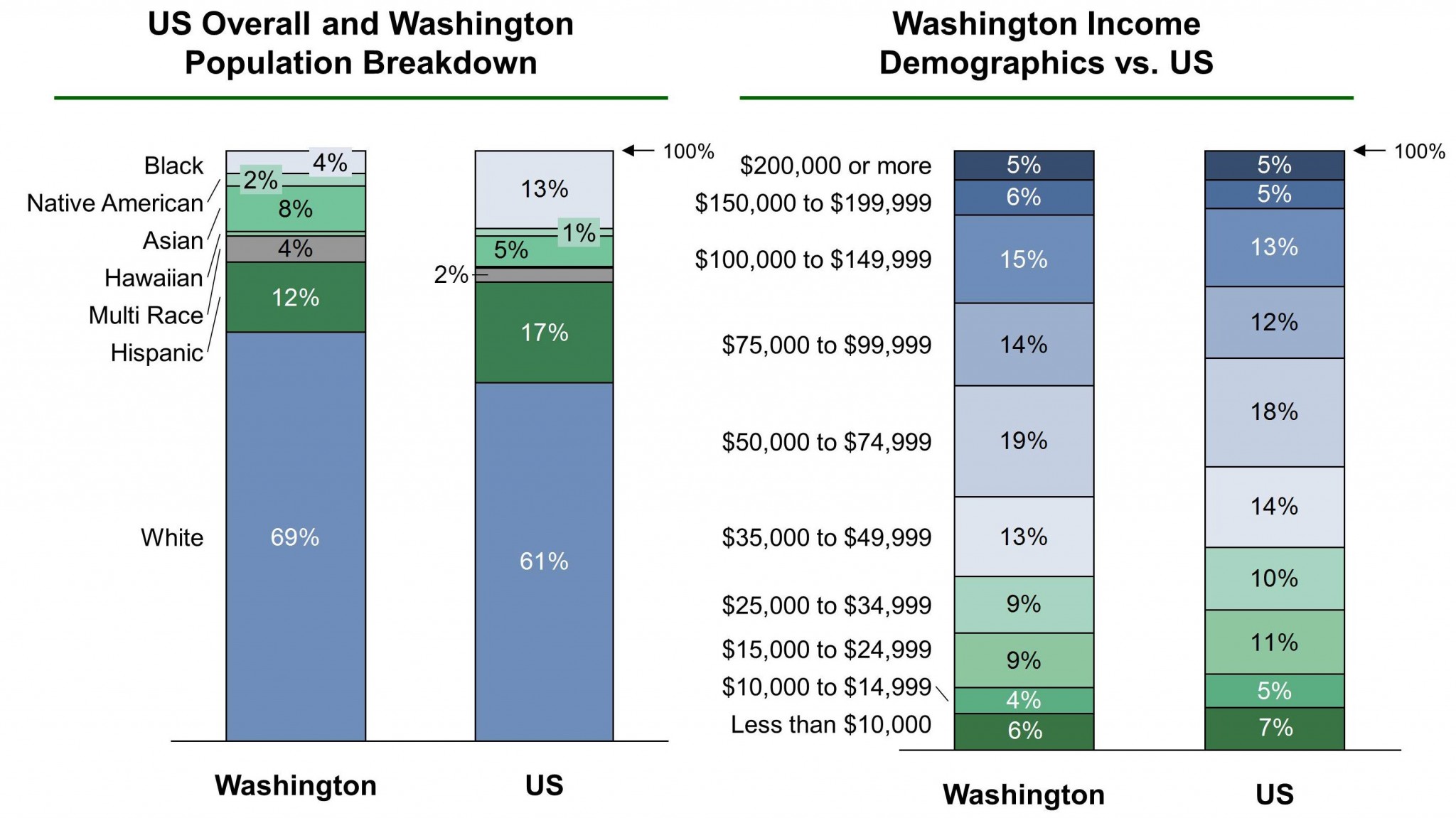
According to the 2010 U.S. Census, the State of Washington has a population of approximately 5.4 million people over the age of 16. Of this, there are approximately 3.5 million people in the labor force, with 3.1 million who are employed and 327,000 who are unemployed. These population numbers represent approximately 2.6 million households.
Washington: Unemployment Trends
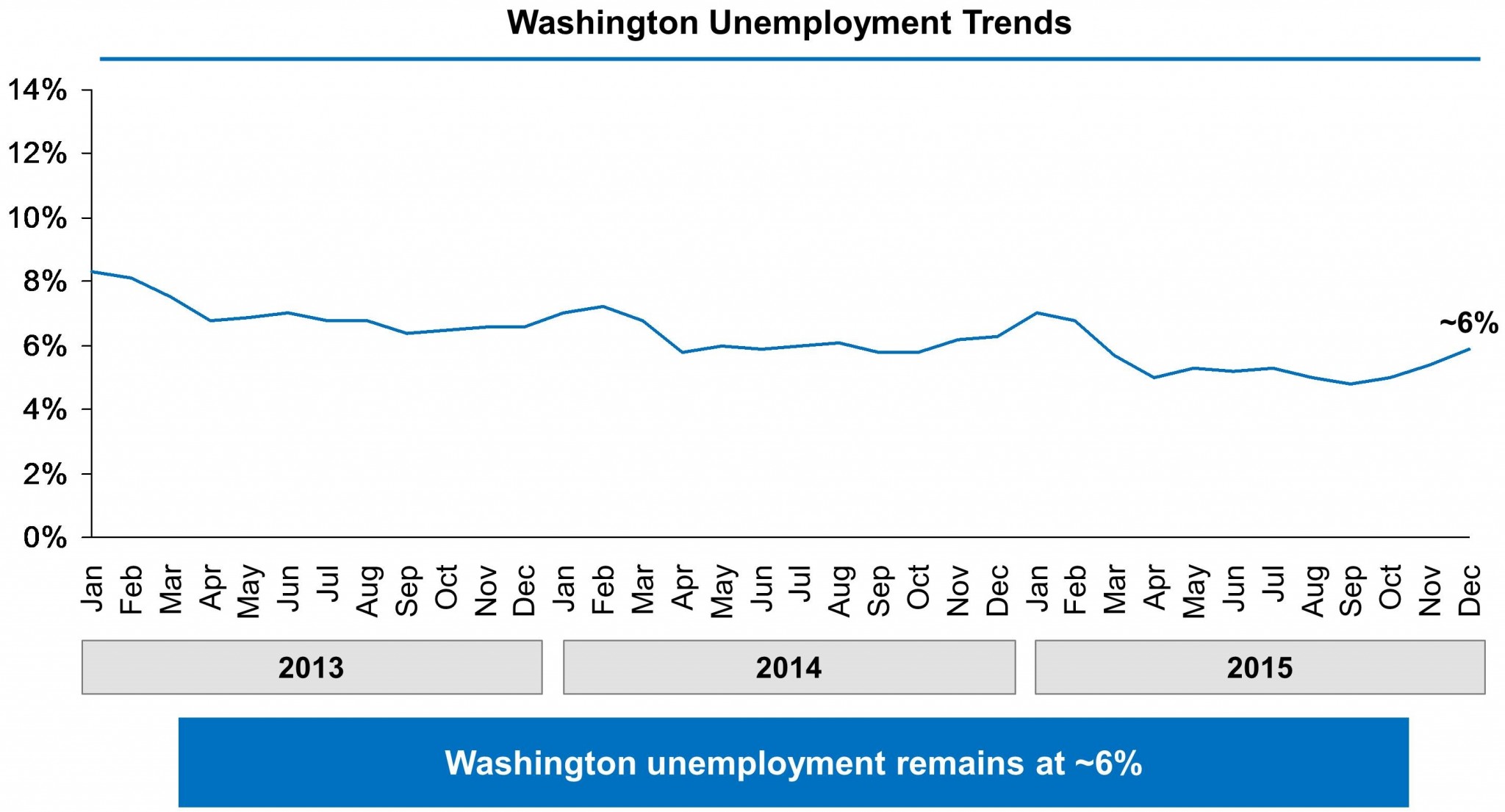
Unemployment statistics for 2015 show average unemployment in the State of Washington at 5.5%. Monthly unemployment rates were 5.0% for October 2015, 5.4% for November 2015, and 5.9% for December 2015.
Washington covers an area of 71,362 square miles, with a width of 360 miles and a length of 240 miles. This implies a population density of 104.9 people per square mile, which makes Washington the 25th-most densely populated state in the United States.
The capital of Washington is Olympia, the largest city is Seattle, and the largest metro area is the Seattle metropolitan area. The gross domestic product (GDP) of Washington in 2010 was $341 billion. This implies a compound annual growth rate from 2000 to 2010 of 4.10% and a per capita GDP of $45,599. Washington has the 14th-largest economy in the United States by GDP.
Significant businesses within the state of Washington include the design and manufacture of aircraft (Boeing), automotive (Paccar), computer software development (Microsoft, Bungie, Amazon.com, Nintendo of America, Valve Corporation, ArenaNet), telecom (T-Mobile USA), electronics, biotechnology, aluminum production, lumber and wood products (Weyerhaeuser), mining, beverages (Starbucks, Jones Soda), real estate (John L. Scott), retail (Nordstrom, Eddie Bauer, Car Toys, Costco, R.E.I.), and tourism (Alaska Airlines, Expedia, Inc.). Washington has significant amounts of hydroelectric power generation.
Washington State Government & EB-5 Investment Financial and Employment Statistics
Washington: Real GDP (2011–2014)
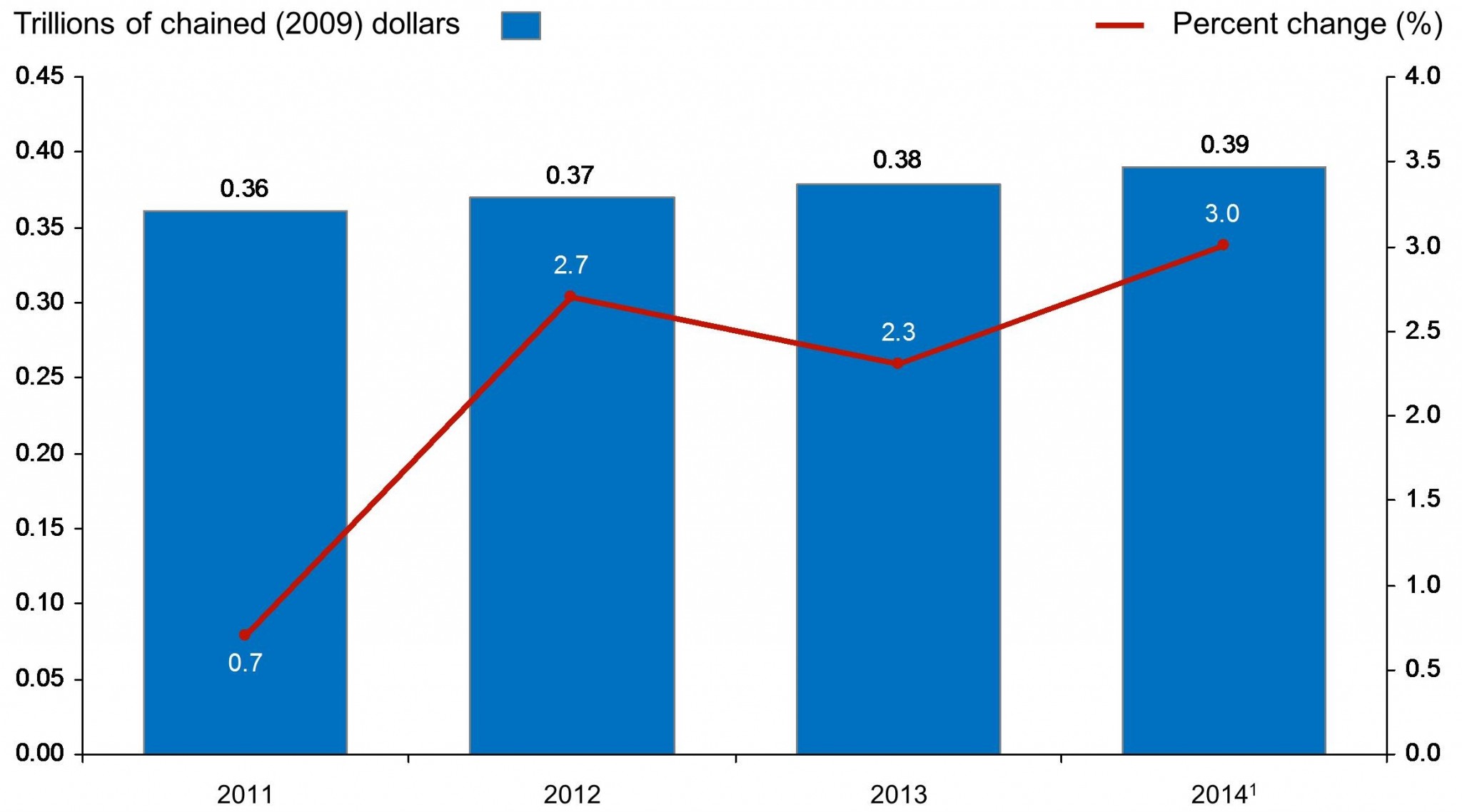
From 2011 to 2014, Washington’s GDP grew by 8.33%, with an average annual GDP growth of 2.2%. In 2014, Washington’s real GDP was $0.39 trillion, ranked 14th in the U.S. The 2013–2014 financial year saw the largest percent change in GDP at 3%, signaling a strong and growing economy.
Washington: Total Personal Consumption Expenditure (2012–2014)

Personal consumption expenditure is the primary measure of consumer spending on goods and services and is a primary engine driving economic growth. Washington’s personal consumption expenditure grew from $0.26 trillion in 2012 to $0.28 trillion in 2014. From 2013 to 2014, total personal consumption expenditure grew by 3.7%.
Washington: State government finances (2013)
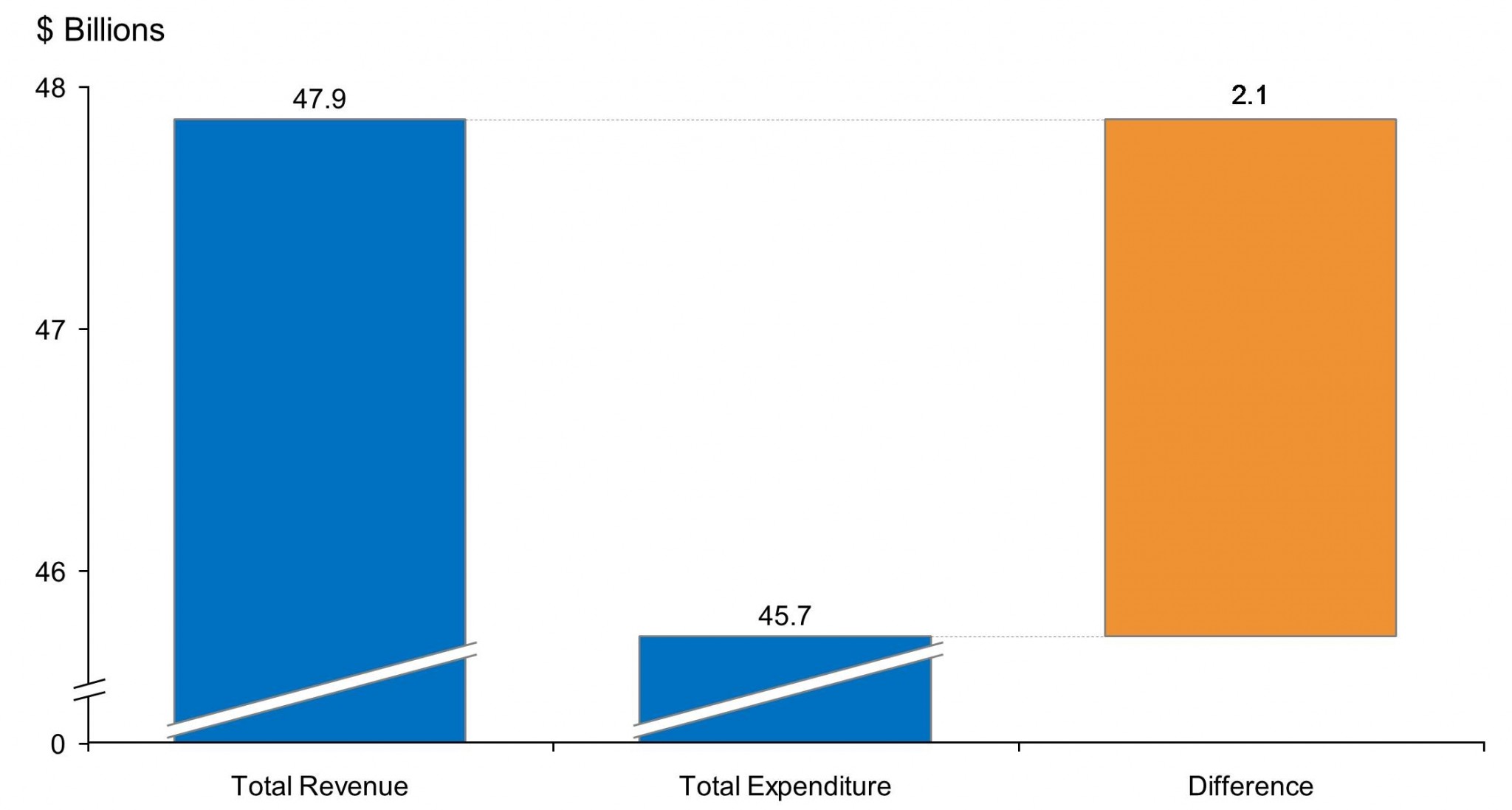
In 2013, the government of Washington collected $47.9 billion and spent $45.7 billion, resulting in a net difference of $2.1 billion. Revenue is sourced from federal and local taxes, sales tax, and individual and corporate taxes. Expenditures include education, welfare, highways, police, and other social services.
Washington: Total economic impact of EB-5 investments (2013)
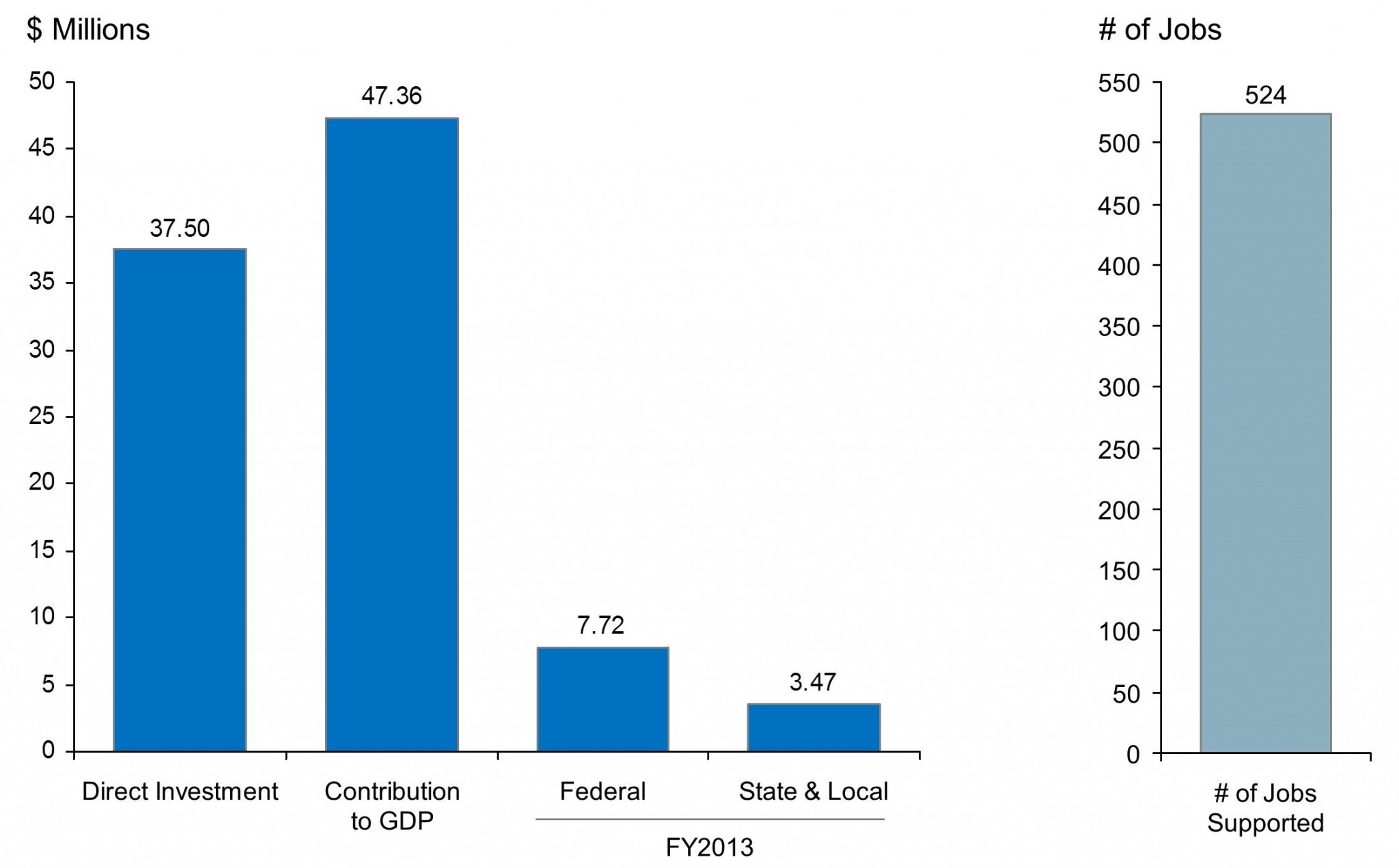
In Washington, EB-5 investment has supported the direct creation of 524 jobs. These jobs were the result of roughly $37 million in direct investment from EB-5 projects, contributing $47.36 million to the state’s GDP. EB-5 investment in Washington also contributed $7.72 million to federal revenue and $3.47 million to Washington state government and local municipal revenue.
Washington: New Privately Owned Housing Units Authorized by Building Permits in Permit-Issuing Places

Since 2009, Washington has seen increased growth of privately owned housing units, both in new buildings and housing units. In 2014, roughly 4,100 privately owned units were authorized by building permits. Most of these units are constructed in Washington’s largest cities, which include Seattle, Spokane, Tacoma, Vancouver, and Bellevue.
The EB5AN State of Washington Regional Center covers the entire state of Washington, including the following cities in the state: Bellevue is a city in the Puget Sound region of Washington State and is often considered a suburb of Seattle. Bellevue was voted the fifth-best place to live in the United States. Redmond is a city in King County famous for being home to Microsoft Corporation, and it has a large presence over the area. It is also the self-proclaimed biking capital of the country.











